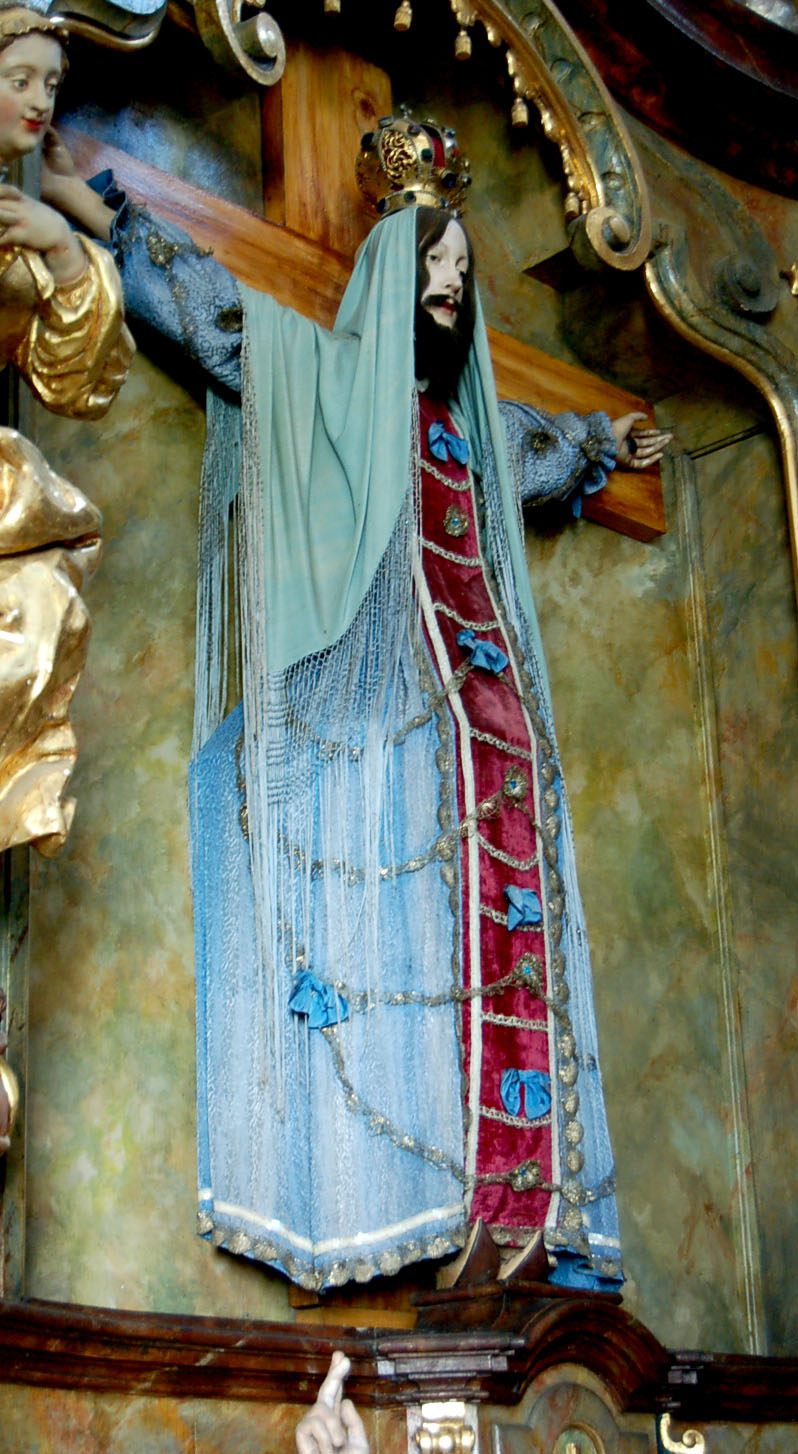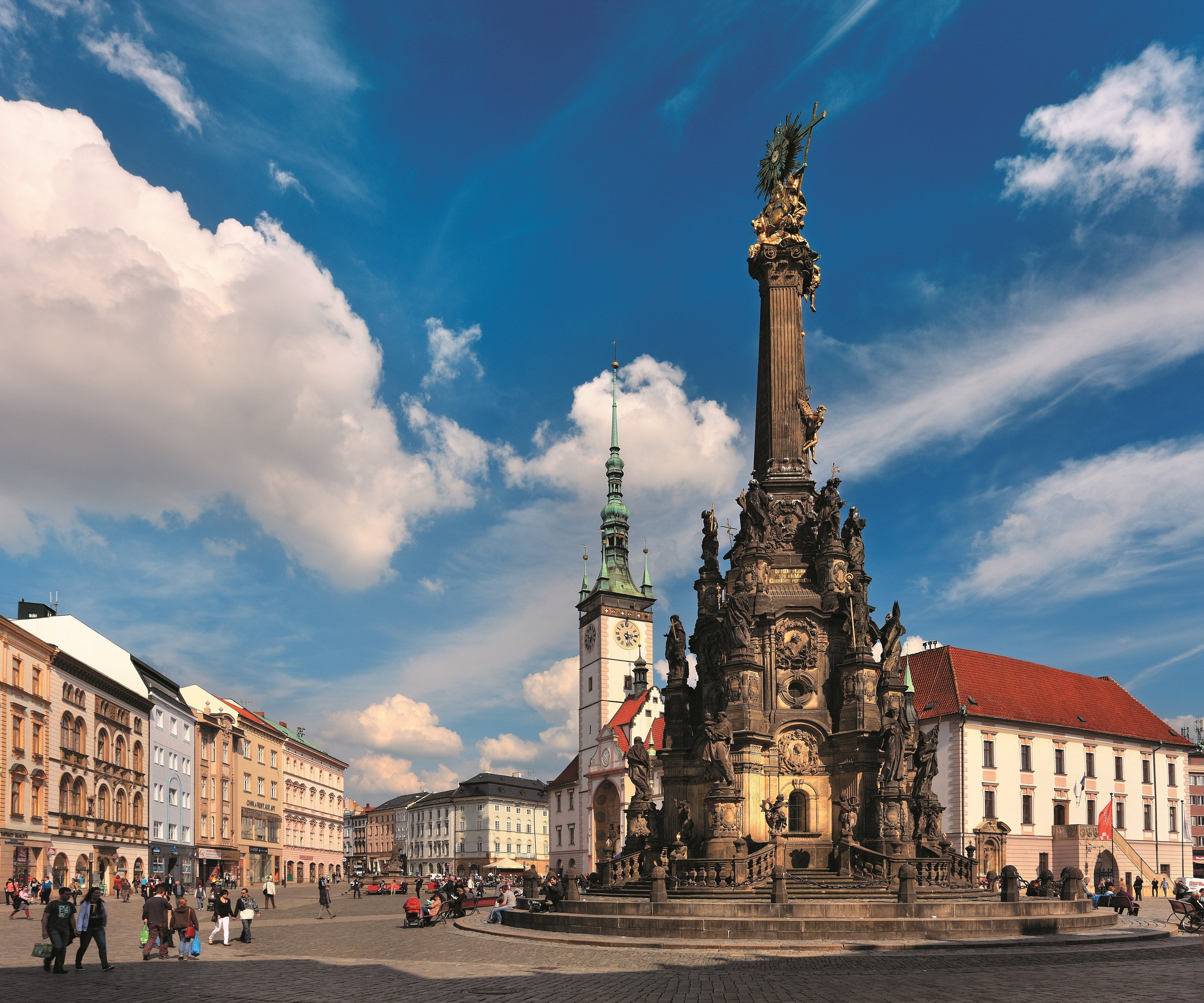Curious and Compelling Statues in the Czech Republic
The country is home to the world’s strangest and most thought-provoking statues.
These devilish heads await travelers who veer off the beaten path in the Czech Republic, and are slightly less distinct, but no less imposing than they were when created in the mid 1800s. (Photo: Petr1868/CC BY-SA 3.0)
The Czech Republic is home to some of the most thought-provoking and strange statues in the world. This should come as no surprise, given that its capital, Prague, is the birthplace of the famed sculptor David Černý, whose provocative works have garnered acclaim all over the world. In addition to containing some of Černý’s most breathtaking masterpieces, even beyond the city of Prague, the Czech Republic is filled with bizarre statues that are sure to make you stop and think. We here at Atlas Obscura have compiled some of the country’s most eccentric offerings.
1. Man Hanging Out, Prague

What looks like a suicide in progress is actually a statue of Sigmund Freud. (Photo: jim/CC BY-SA 2.0)
Dangling above one of the cobblestone streets in Prague’s Old Town is a sight that has caused more than a few people to be concerned that a man is about to plummet to his death, but fear not, it is simply a statue of Sigmund Freud. As with many of David Černý’s works, the sculpture is deliberately provocative and startlingly lifelike, especially at a distance. The work has been displayed in places ranging from London to Grand Rapids, Michigan, but is now back in Prague, hanging extended over a tight, historic street, causing passersby to look away from the ancient surroundings and take a look up to ponder the future.
2. Zizkov Tower Babies, Prague

Cerny’s eerie babies crawl up Prague’s famed Zizkov Tower. (Photo: © Michal Fic/CzechTourism)
Gigantic metal babies crawl up Prague’s imposing Zizkov television tower. In 2000, Černý attached the 10 crawling babies to the iconic tower, which, following a brief removal in 2001, became a permanent feature due to popular demand. From the bottom of the tower, each baby seems tiny, but in reality, they are all over six feet in height. That’s not the weirdest part: their faces are not faces–they’re machine-like slots. The tower babies stand as one of Černý’s most impressive and massive works of art in the city.
3. Proudy, Prague

The Černý work with perhaps the most obvious sense of humor is the Proudy statue, on display at the Franz Kafka museum in Prague. The sculpture consists of two bronze men who robotically waggle their metal junk around to spell out text messages with their pee. That’s right–you can actually send messages to a phone number inscribed on a plaque near the statue, and it will interrupt its programmed movement and spell out the words you sent to it.
4. Upside-down statue of King Wenceslas Riding a Dead Horse

St. Wenceslas rides a dead, upside-down horse on Černý’s take of a classic sculpture. (Photo: © Pavel Hroch/CzechTourism)
Hanging from the ceiling of the Art Nouveau Lucerna Palace in Prague, an ancient king rides triumphantly astride… an upside-down, apparently dead horse. Černý’s Horse is a parody of the famous sculpture of St. Wenceslas by Josef Václav Myslbek that can be seen on the square. As you walk into the palace to view the absurd sculpture hanging from the ceiling, don’t forget to admire its majestic, Art Nouveau setting.
5. Statue of St. Wilgefortis, Prague

The tale of Wilgefortis, while strange and fascinating, is entirely untrue, and this bearded lady never existed at all. (Photo: Curious Expeditions/Public Domain)
There is a story of a woman, Wilgefortis, whose father is said to have promised her to a pagan king. The pious Wilgefortis would have nothing to do with the heathen king, so she took a vow of virginity and prayed for a miracle, which came in the form of a beard. The king saw the beard and immediately called the marriage off. In a fit of rage spurred by this unfeminine miracle, Wilgefortis’ father had her crucified. This tale, while strange and fascinating, is in fact entirely untrue: this is actually a statue of Jesus in a dress, believed to have been the work of Nicodemus. Jesus was often clothed this way in the Middle Ages, until the practice was discontinued in favor of the loincloth we know today. Still, Wilgefortis’ story lives on through an 11th-century wooden carving, and has since inspired many oppressed and unhappily married women around the globe.
6. Karel Hynek Macha Statue, Prague

Though the tradition calls for couples to lay flowers on May 1st, the statue of Mácha is a welcome sight to lovers and lovers of poetry year-round. (Photo: Jan Polák/CC BY-SA 3.0)
Wanderers in Prague’s Petřín Hill park can discover the striking statue of Karel Hynek Mácha, poet of the Czech epic Maj. Mácha’s dreamy, unusual pose catches the eye: this is no warrior with a boldly flourished sword, no classical figure crowned with laurels. So why do couples snap pictures at his feet? The answer lies in the following tradition: on May 1st of every year, couples from Prague gather and lay flowers at Mácha’s statue in Petřín Park, honoring the man who is now regarded by his countrymen as “the poet of love.” The statue is equally exciting to stumble upon throughout the rest of the year, with Mácha’s contemplative stance and fistful of blossoms a welcome sight to both lovers and lovers of poetry.
7. The Devils Heads, Želizy

The Devil’s Heads cut an imposing shape against the forests of Želizy. (Photo: Richenza/CC BY-SA 3.0)
A disturbing sight awaits hikers exploring the forest above the village of Želizy—two enormous demonic faces carved from the native stone stare back with empty eyes. Created by Vaclav Levy in the mid 1800s, the nearly 30 foot tall stone heads are known locally as Certovy Hlavy or the “The Devil Heads” and have been a local attraction for generations. Other carvings by the artist including artificial caves and scenes inspired by fairy tales adorn other nearby rock faces. Now suffering slightly from the ravages of time and weather, the faces have grown less distinct over time, but no less disturbing.
8. Holy Trinity Column, Olomouc

An ornate column built to celebrate the survivors of the plague is now a UNESCO World Heritage site. (Photo: © Libor Svacek/CzechTourism)
Constructed between 1716 and 1754 by local Olomouc craftsman, the Holy Trinity Column was recognized by UNESCO in 2000, when it was added to the World Heritage List after being cited as “one of the most exceptional examples of the apogee of central European Baroque artistic expression.” The nearly 115-foot column was erected as a gesture of gratitude for having survived a bout of the plague as devout Catholics often saw fit during the period, and the monument remains a point of pride for the Czech people.
These posts were written in partnership with CzechTourism. For more obscure and unconventional stories, from the Land of Stories, head here.


























Follow us on Twitter to get the latest on the world's hidden wonders.
Like us on Facebook to get the latest on the world's hidden wonders.
Follow us on Twitter Like us on Facebook